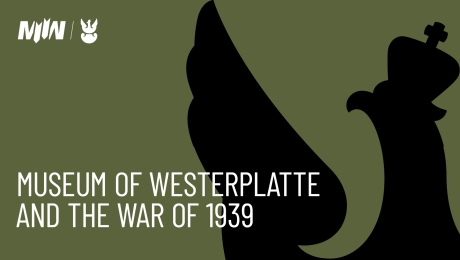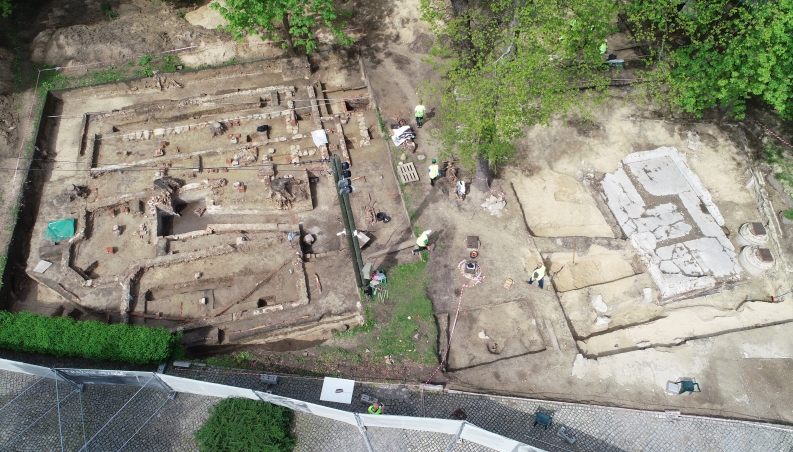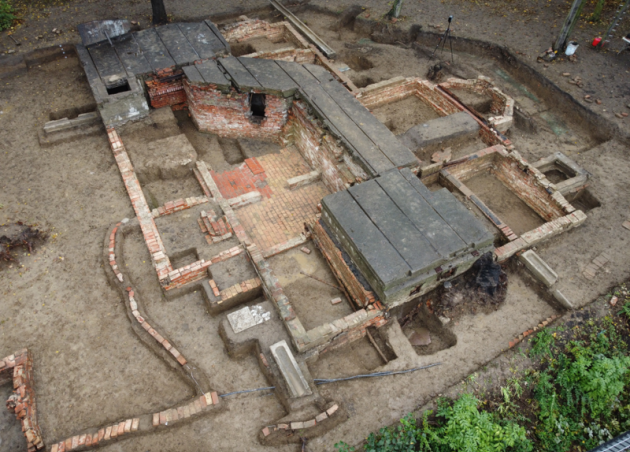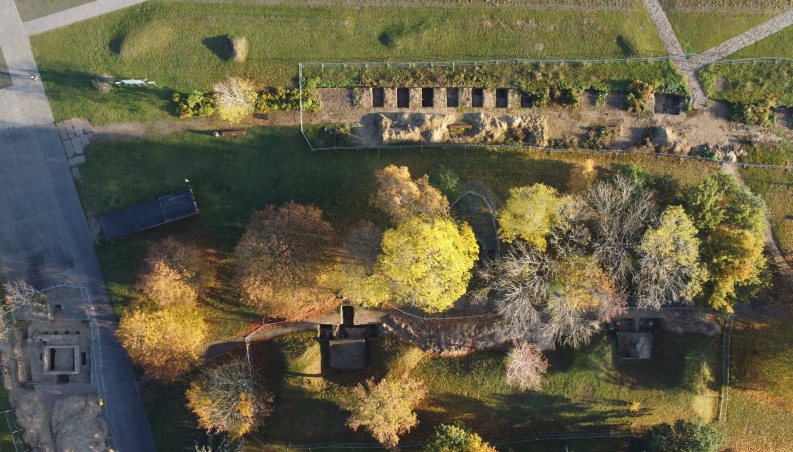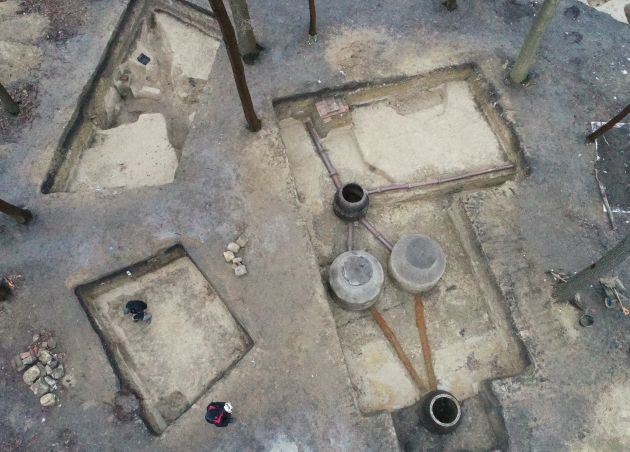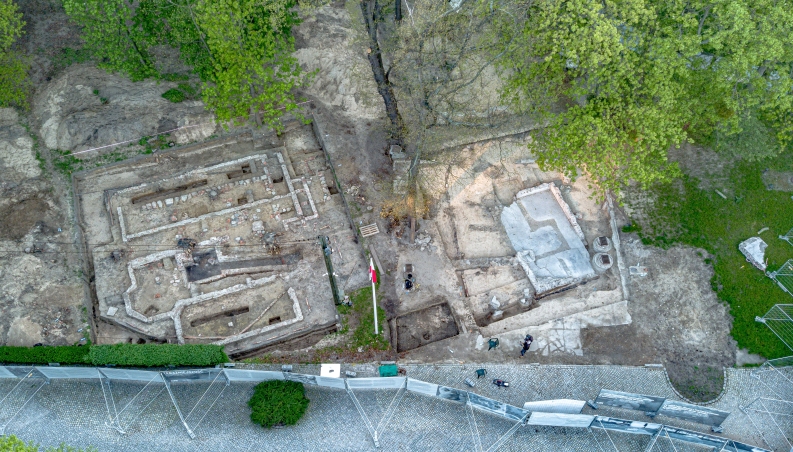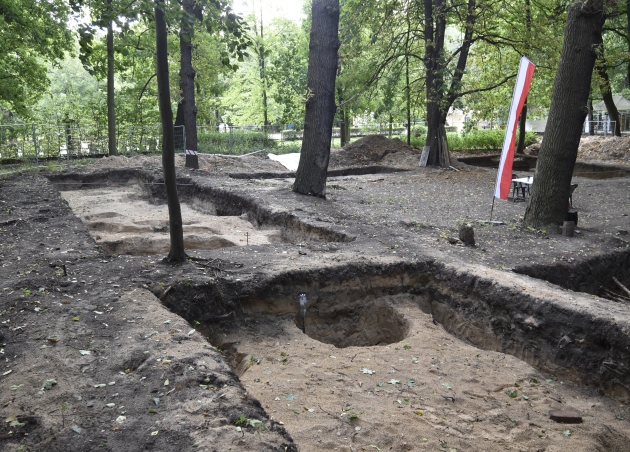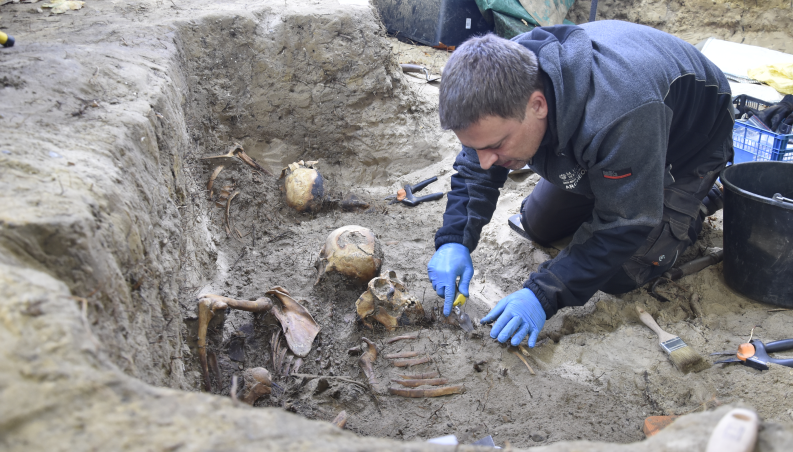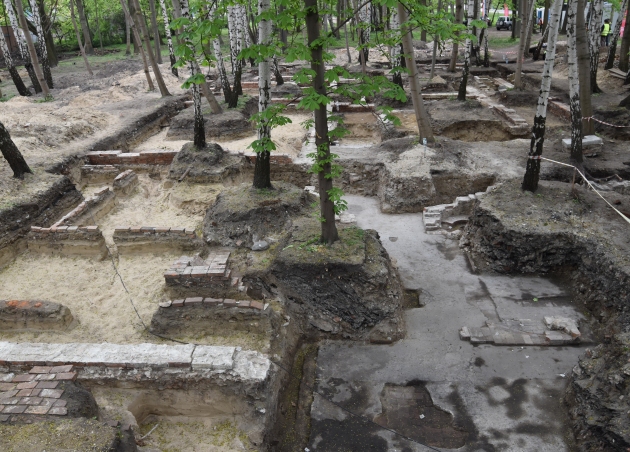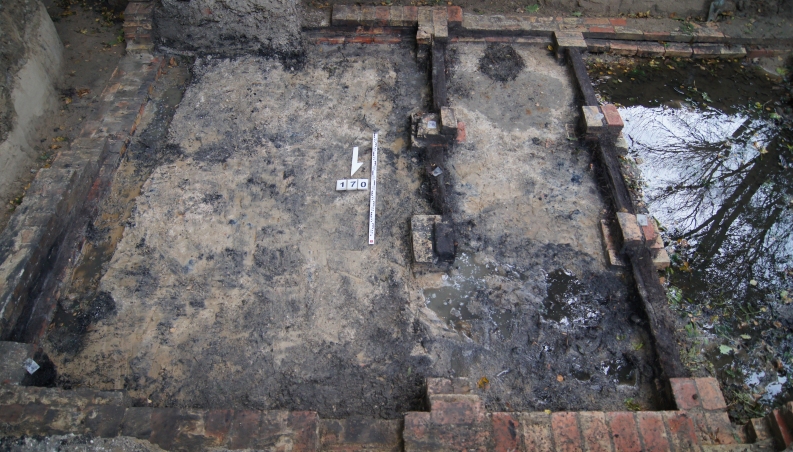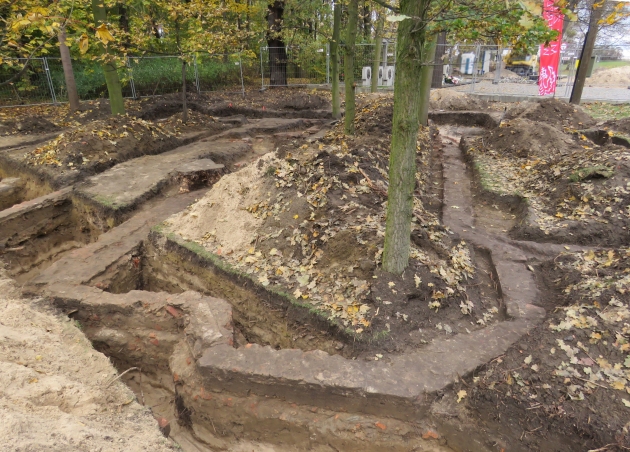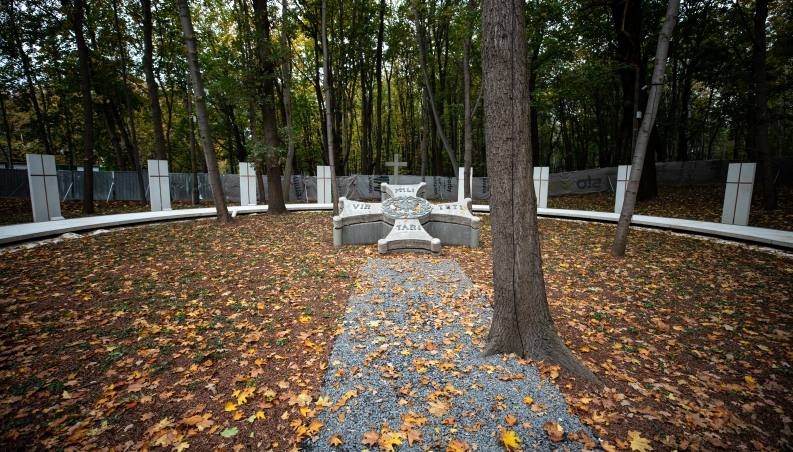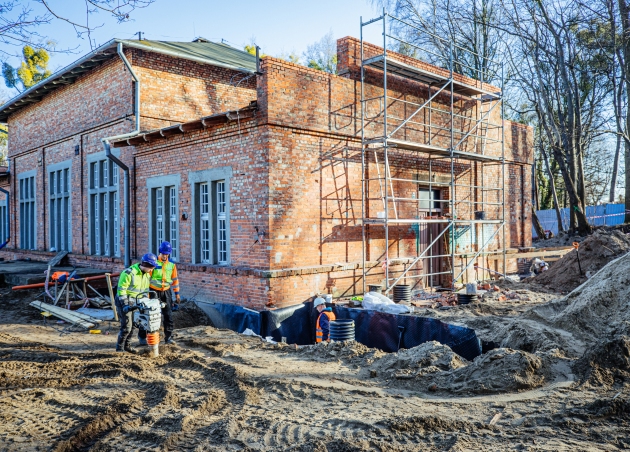Archaeological research on Westerplatte was initiated in 2016 by the Westerplatte and the Museum of the Second World war in Gdansk. After the merger of this institution with the Museum of the Second World War in Gdańsk, these research activities have continued to this day. They are part of interdisciplinary studies whose main objective is to comprehensively understand the history of the Military Transit Depot by discovering and documenting all of the associated elements: the buildings, elements of railway, road and technical infrastructure, changes in the terrain resulting from battles (craters, trenches, battle positions). The top priority, however, is to find the remains of all of the Polish soldiers who fell during the defence. So far, 9 stages of detailed archaeological research have been completed, covering an area of 5781.4 m².
During these stages, the most significant objects related to the history of the Military Transit Depot (MTD) have been meticulously examined: the remains of Guardhouse No. 5, officer's villa, non-commissioned officer's mess, old barracks, the administrative building, ammunition shelters No. 8 and 12, as well as craters formed on September 2nd, 1939, during the aerial bombing. Additionally, the condition and construction of ammunition shelters No. 10 and 11 were assessed, and the search for the remains of Legionnaire Mieczysław Krzak and the position of the field gun, known as "putiłówka," used by Polish soldiers for the defense of the depot, was initiated.
In 2019, a breakthrough discovery was made - the graves of 9 Polish soldiers were found. Some of them perished in the bombed Guardhouse No. 5 on September 2nd, 1939, by the Luftwaffe, while others fell in other parts of the peninsula. Cooperation between the Museum of the Second World War and the Pomeranian Medical University in Szczecin, as well as with the investigative section of the Institute of National Remembrance in Gdańsk, resulted in the genetic identification of 7 individuals. In 2022, thanks to the efforts of the museum, funeral ceremonies were organized during which the defenders of the Military Transit Depot were laid to rest in the new Polish Army Soldiers' Cemetery built on Westerplatte.
In addition to excavations, museum staff also conducted archaeological oversight of works related to the construction of the Westerplatte and World War II Museum. Such oversight was carried out during the construction of the Polish Army Soldiers' Cemetery on Westerplatte, covering an area of over 3,500 m². Three craters from aerial bombs or artillery shells near the officer's villa and Guardhouse No. 5 were located and examined during this oversight. Currently, museum archaeologists are overseeing the modernization and adaptation of the former power plant building for exhibition purposes, covering an area of over 1,500 m² and over 2,000 meters of linear excavations. So far, the remains of German soldiers who died in the spring of 1945 have been found as a result.
In parallel with archaeological research, sappers used metal detectors to clear the area of explosive and hazardous military-origin materials - also under archaeological supervision. These operations were carried out by soldiers of the Polish Armed Forces, including the 43rd Naval Engineering Battalion, the Sapper Company of the 2nd Engineer Battalion of the 2nd Sapper Regiment from Kazuń Nowy, and specialists from private companies. The purpose of these activities was to ensure safety, not only for the archaeologists and other museum employees but above all for the tourists who visit Westerplatte in large numbers. So far, over 11 hectares (110,376 m²) of land have been checked, and over 3,500 explosive and hazardous military-origin items have been disposed of, including 3 aerial bombs, over 120 artillery shells (ranging from 20 to 150 mm in caliber), mortar and hand grenades, fuses, and small arms ammunition components. One of the neutralized bombs was a 500 kg Soviet aerial bomb found 30 cm below the surface.
Furthermore, over an area of more than 16 hectares (163,424 m²), geophysical surveys have been conducted using a magnetometer and ground-penetrating radar. These surveys enable the identification of potentially dangerous objects buried at depths exceeding the range of standard sapper operations, as well as relics of buildings, bomb craters, and other archaeological objects. In places where post-war earth embankments disrupted the readings of the devices, a series of drillings were carried out. Laser scanning of the relics of MTD buildings, including the new barracks, Guardhouses No. 3 and 5, the officer's villa, ammunition shelters No. 8, 10, 11, 12, and the "Fort" outpost, was also conducted.
During the ongoing research seasons and archaeological oversight, over 67,000 items related to the historical context of the peninsula, dating back to the mid-17th century, have been obtained. Over 26,000 of them have been recognized as historical artifacts of significant historical, exhibition, and scientific value. They are systematically preserved, and a selection of the most valuable items will be presented in the archaeological exhibition in the former power plant building.
In the upcoming season, research is planned to discover and precisely locate the relics of ammunition shelter No. 9, uncover and document the relics of the non-commissioned officer's villa and the full extent of the Mikołajewo utility building, determine the course and extent of the MTD border walls, and continue the search for the remains of Legionnaire Mieczysław Krzak and the "putiłówka" position.
A summary of the area, duration, and results of research and archaeological oversight stages:











